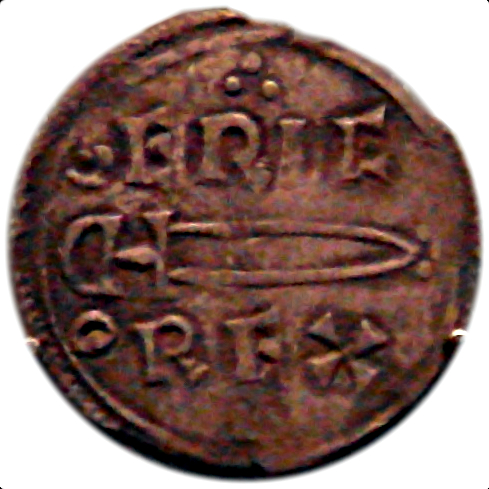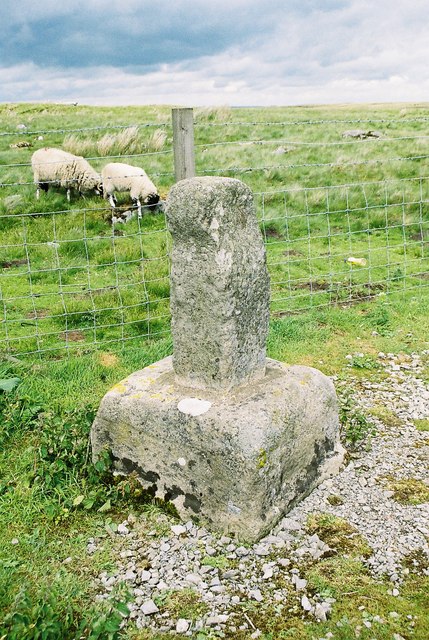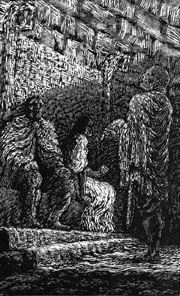
Erik Bloodaxe’s coin with the inscription “Rex” from England
Eric “Bloodaxe” Haraldsson (c. 885-954), the last king of Northumbria – a realm the Vikings usurped after the invasion and conquest of much of England by the Great Heathen Army between the years 867 and 872AD, was one of Norwegian king Harald Fairhair’s many sons sired from nine wives. According to the Heimskringla – a saga of the Norse kings written by Icelandic historian Snorri Sturluson in the 1230s, “King Harald’s children were all fostered and brought up by their relations on the mother’s side.”

Eric was born in Norway and raised in the fjord district near his father – as he was “the most beloved and honoured by King Harald of all his sons.” When the favorite son turned twelve, his father gifted him five long-ships, and he set off on a four-year expedition to the Baltic, Denmark, and “Friesland, and Saxonland” – in present-day northern Holland. After that he sailed out into the North Sea, and “plundered in Scotland, Bretland, Ireland, and Valland [western France], and passed four years more in this way.” Finally, in his obvious quest to survey the frontiers of the Viking world, Eric “sailed north to Finmark, and all the way to Biarmaland [on the White Sea and Dvina River], where he had many a battle, and won many a victory.” On his return voyage through Finmark, in present-day northern Norway and Sweden, Eric met his wife-to-be – the daughter of a Viking chieftain from the frigid coastal kingdom of the far north:
When he came back to Finmark, his men found a girl in a Lapland hut, whose equal for beauty they never had seen. She said her name was Gunhild, and that her father dwelt in Halogaland, and was called Ozur Tote. “I am here,” she said, “to learn Lapland-art, from two of the most knowing Laplanders in all Finmark, who are now out hunting. They both want me in marriage. They are so skilful that they can hunt out traces either upon the frozen or the thawed earth, like dogs they can run so swiftly on skees, that neither man nor beast can come near them in speed.[1]
A Throne “destined” for Eric
When Harald turned fifty, he resolved to settle growing disputes between his sons. “Eirik Blood-axe expected to be head king over all his brothers and King Harald intended he should be so; and the father and son lived long together.” Seeing this strife, Harald called a Thing to settle the discord by bestowing “all his sons the title of king, and made a law that his descendants in the male line should each succeed to the kingly title and dignity; but his descendants by the female side only to that of earl.” He then divided the country to appease the brothers:
Vingulmark, Raumarike, Vestfold, and Thelemark, he bestowed on Olaf, Biorn, Sigtryg, Erode, and Thorgils. Hedelmark and Gudbrandsdal he gave to Dag, Hring, and Ragnar. To Snowfrid’s sons he gave Ringerike, Hadeland, Thoten, and the lands thereto belonging. His son Guthorm, as before mentioned, he had set over the country from Svinesund to the Glommen, and to defend the country eastwards. King Harald himself generally dwelt in the middle of the country, and Hrorek and Gudrod were generally with his court, and had great estates in Hordaland and in Sogn. King Eirik was also with his father King Harald, and the king loved and regarded him the most of all his sons, and gave him Halogaland and North More, and Raumsdal. North in Throndhjem he gave Halfdan the Black, Halfdan the White, and Sigrod land to rule over. In each of these districts he gave his sons the one half of his revenues, together with the right to sit on a high-seat, – a step higher than earls, but a step lower than his own high-seat. His king’s seat each of his sons wanted for himself after his death, but he himself destined it for Eirik.[2]
Dividing the realm assuaged some for a time but new disputes arose. Other brothers, such as Thorgils and Erode, left home to plunder Scotland, Ireland, and the Orkneys, and died trying to create kingdoms of their own. Harald lived for many years arbitrating occasional feuds, until he turned eighty, could no longer manage his regal duties, and “brought his son Eirik to his high-seat, and gave him the power and command over the whole land.” Nevertheless, the seeds of contention had been sown:
Now when King Harald’s other sons heard this, King Halfdan the Black also took a king’s high-seat, and took all Throndhjem land, with the consent of all the people, under his rule as upper king. […] Now when the people of Viken heard that those of Hordaland had taken Eirik as upper king, they did the same, and made Olaf the upper king in Viken, which kingdom he retained. Eirik did not like this at all. Two years after this, Halfdan the Black died suddenly at a feast in Throndhjem, and the general report was that Gunhild had bribed a witch to give him a death-drink. Thereafter the Throndhjem people took Sigrod to be their king.[3]
For the last three years of Harald’s life, he lived on his vast farms in the southwestern part of the country. Eric’s wife Gunhild gave birth to a son, “on whom King Harald poured water [baptized], and gave him his own name, and the promise that he should be king after his father…”

After Harald’s passing Eric was free to deal with his brother-contenders – killing Olaf and Sigrod in battle and forcing Gudrod and Trygve into the Uplands. According to Snorri, Eric “was a stout handsome man, strong, and very manly, – a great and fortunate man of war; but bad-minded, gruff, unfriendly, and silent.” The Icelandic historian also commented that Eric’s wife “was the most beautiful of women, – clever, with much knowledge, and lively; but a very false person, and very cruel in disposition.” The two had many children: Gamle, the oldest; then Guthorm, Harald, Kagnfrod, Ragnhild, Erling, Gudrod, and Sigurd Sleva. All were handsome, and of manly appearance.”[4]
Harald’s Youngest Son Haakon
By all accounts the royal succession was settled but Harald’s kingdom was soon torn apart by a secret likely kept from Eric – the existence of Harald’s youngest son Haakon. Haakon was born when Harald was in his seventies to Tora Mosterstong, the daughter of Horda-Kåre – a powerful ally of Harald’s during the decisive Battle of Hafrsfjord in 872. Although believed to be born out of wedlock, Harald undoubtedly felt strongly about his youngest son since he sent him to be safely fostered under the able stead of Northumbria’s King Athelstan (Æthelstan), who wisely reigned the northern-English realm between 924 and 939:
King Athelstan had Hakon baptized, and brought up in the right faith, and in good habits, and all sorts of exercises, and he loved Hakon above all his relations; and Hakon was beloved by all men. Athelstan was a man of understanding and eloquence, and also a good Christian. King Athelstan gave Hakon a sword, of which the hilt and handle were gold, and the blade still better; for with it Hakon cut down a mill-stone to the centre eye, and the sword thereafter was called the Kvernbite. Better sword never came into Norway, and Hakon carried it to his dying day.[5]
To be continued…
[1] Samuel Laing, The Heimskringla or the Sagas of the Norse Kings From the Icelandic of Snorre Sturlason, vol. 1 (New York: Scribner & Welford, 1889), 367, 382-3.
[2] Ibid. 384-5. Snowfrid, daughter of the Sami (“Fin”) King Svase, was one of Harald’s wives.
[3] Ibid. 394
[4] Ibid. 397-8.
[5] Ibid. 394. “When King Harald began to grow old he generally dwelt on some of his great farms in Hordaland; namely, Alrekstad, or Seaheim, Fitjar, Utstein, or Augvaldsnes in the island Karmt. When Harald was seventy years of age he begat a son with a girl called Thora Mosterstang, because her family came from Moster. She was descended from good people, being connected with Horda-Kare; and was moreover a very stout and remarkably hand-some girl.” (391)
About the author
Benjamin J. Swenson is an assistant professor at Hoseo University in Asan, South Korea. He holds a PhD from Pompeu Fabra University in Barcelona, Spain, where his dissertation addressed Euro-American military history and the advent of guerrilla warfare and counterinsurgency doctrine in the nineteenth century. His work has recently appeared in the Journal of Military History, and his latest, The Dawn of Guerrilla Warfare, will be published by UK’s Pen & Sword in 2023. His hobbies include Viking sagas and chess.
2 thoughts on “Eric Bloodaxe (1): The Last King of Northumbria’s Ouster from Norway”